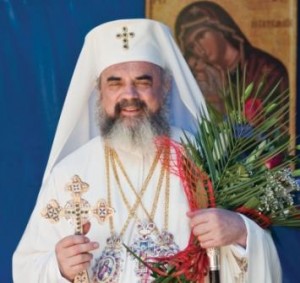
With all of the news focused on Conclave in Rome, I have received many questions about how Patriarchs in the Orthodox Church are elected. Like the rest of the world, I did not expect the Cardinals to work so quickly to elect a new Bishop of Rome, but I figured since the question had been asked why not try and answer it.
As I understand systems, each Patriarchate has a similar, yet different, process to elect the Patriarch. Last year saw the election of the Pope of the Coptic faithful by a small boy wearing a blindfold and reaching into an urn to select a name. I also read this week that the election of the Patriarch of Constantinople has changed over the years with influence of the Turkish Government.
I am a priest of the Romanian Orthodox Church and thus the Patriarch of Romania so I will attempt to describe the process for this particular Church. The process for the Election of the Patriarch is included in the document, “The Statutes for the Organization and Functioning of the Romanian Orthodox Churches” most specifically Article 127 of that document.
First, who can be elected:
Article 127 Section 1 states the following:
Any Metropolitan, Archbishop or Eparchial bishop, Romanian Citizen, Doctor or Graduate of theology who imposed himself in the life of the Church and society through pure life, theological culture, ecclesiastic dignity, missionary zeal and household sense, can be elected Patriarch.
So basically any baptized male with a degree in theology. Notice the candidate does not have to be priest or bishop prior to his election.
Now some definitions
The Holy Synod: The Highest Authority in the Romanian Orthodox Church. Made up of the Patriarch, who chairs the Synod and all of the Bishops and Assistant Bishops of the Romanian Orthodox Church inside and outside of Romania.
The Standing Synod: The Central Deliberative body made up of the Patriarch, who is the chair, and all of the Metropolitan Bishops of the Romanian Orthodox Church again from inside and outside of Romania. The Standing Synod also includes 1 Archbishop and 2 Bishops assigned each year by the Holy Synod. As I understand the function of the Standing Synod, this is the group that meets between meetings of the Holy Synod to assist the Patriarch in the running of the Church.
Church National Assembly: The Central Deliberative Body of the Church for the administrative, social, cultural, economic, and patrimonial fields. This assembly is made up of the Holy Synod, and 3 representatives from each Diocese of the church, 1 clergy and 2 lay people. The Assembly meets once a year or as needed and is chaired by the Patriarch. There is a list of items that this group has the responsibility for but think of this group as the Legislative arm of the Church.
Now to the actual election
When the Patriarchal Throne has been vacated either by death, resignation, removal, or retirement (yes Patriarchs do retire) the Metropolitan with the highest seniority becomes the Locum Tenes of the Patriarchal Throne.
The Holy Synod will consult with the National Assembly as well as the members of the Eparchial Assembly of the Archdiocese of Bucharest, the Patriarch is also the Archbishop of Bucharest and Metropolitan of Muntenia and Dobrudgea. Also present at this meeting will be the deans of the theological faculties, and a director from all of the seminaries.
A list of possible candidates is drawn up and a vote, by secret ballot, is taken. The two names that received the most votes will be submitted to the Standing Synod along with all of the bishops hat received votes.
The Holy Synod will meet, and voting by secret ballot, will create a list of three names to be elected Patriarch.
The Holy Synod then meets for the purpose of the election of the Patriarch. The meeting of the Synod is chaired by the Locum Tenes with all of the other bishops participating and sitting according to rank and the date of their consecration.
The President is assisted by four bishops during the election.
Two urns are used for the purpose of placing the ballots. The names of the candidates received from the Church National Assembly and the Synod of bishops are used for the election.
Each bishop is given a ballot, he “kisses the Holy Gospel, and marks the ballot, with fear of God, the name of the one who he thinks worthy to be elected.” Article 128, section 4.
The President counts the votes, passing them from one Urn to the other. The count must equal that of the ballots distributed. Each vote is unfolded and shown to the two assistants and the name is read out loud for all to hear. The secretary records each vote and then determines that the number equals the total votes cast.
The Patriarch of Romania is the candidate who receives two thirds of the votes cast, if no one is elected on the first ballot a second ballot is taken in the same manner this time with only the two candidates who received the most votes on the first ballot.
Although different from that of what we witnessed in Rome this week, parts of the process are similar. One of the major differences is that the names of the candidates are known to the faithful prior to the election and, as demonstrated by the procedure, the lay people are consulted all along the process. They do not do the actual voting, but they participate in the selection of the candidates.
It should be noted that lay people are also involved in the process of selecting bishops. Ultimately the Holy Synod elects bishops, but each local Eparchial Assembly selects candidates for bishops from among the monastics in the Church.
I will write about that process in another essay.
